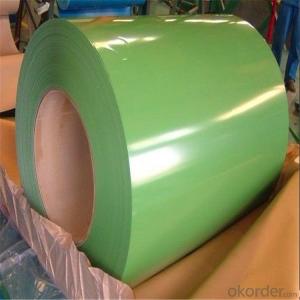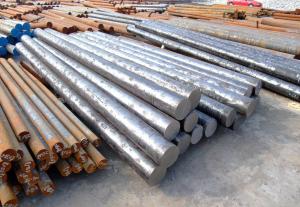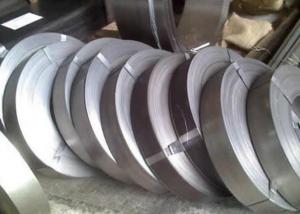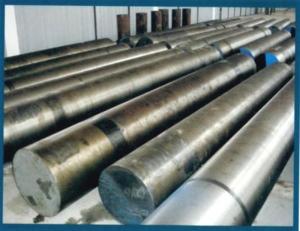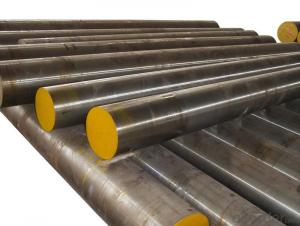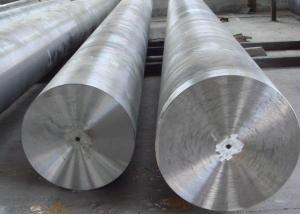PPGI Prepainted Galvanized Steel Coil for PU Panel
- Loading Port:
- Tianjin
- Payment Terms:
- TT OR LC
- Min Order Qty:
- 100 m.t.
- Supply Capability:
- 500000 m.t./month
OKorder Service Pledge
OKorder Financial Service
You Might Also Like
Item specifice
PPGI Prepainted Galvanized Steel Coil for PU Panel
Description of PPGI Prepainted Galvanized Steel Coil for PU Panel
Product | PPGI/PPGL |
Capacity | 5,000 tons/month |
Base material | Hot dipped galvanized steel |
Thickness | 0.2-2.0mm |
Width | 600-1250mm(according to your need) |
Coil Weight | 3-6tons |
Quality | SGCC, DX51D |
Color | RAL No. or customers samples’ color |
Zinc-coating | 30g/m2-180g/m2 |
Coil ID | 508mm/610mm |
Technique | Cold rolled—hot dipped galvanized—color coated |
Painting | Top painting:15~25μm |
Back painting: 6~10μm | |
Tolerance | Thickness: +/-0.02mm |
Width:+/-2mm | |
Shipment time | within 15-45 workdays |
Payment | T/T, L/C at sight |
Packing | Standard export packing |
The special order can be negotiated. | |
Application of PPGI Prepainted Galvanized Steel Coil for PU Panel
APPLICATION OF OUR PREPAINTED STEEL | ||||||||||
Construction | Outside | Workshop,agricultural warehouse,residential precast unit | ||||||||
corrugated roof,roller shutter door,rainwater drainage pipe,retailer booth | ||||||||||
Inside | Door,doorcase,light steel roof stucture,folding screen,elevator,stairway,ven gutter,Construction Wall | |||||||||
Electrical applicance | Refrigerator,washer,switch cabnet,instrument cabinet,air conditioning,micro-wave owen,bread maker | |||||||||
Fuiniture | Central heating slice,lampshade,chifforobe,desk,bed,locker,bookself | |||||||||
Carrying trade | Exterior decoration of auto and train,clapboard,container,isolation lairage,isolation board | |||||||||
Qthers | Writing panel,garbagecan,billboard,timekeeper,typewriter,instrument panel,weight sensor,photographic equipment | |||||||||
Products Show of PPGI Prepainted Galvanized Steel Coil for PU Panel
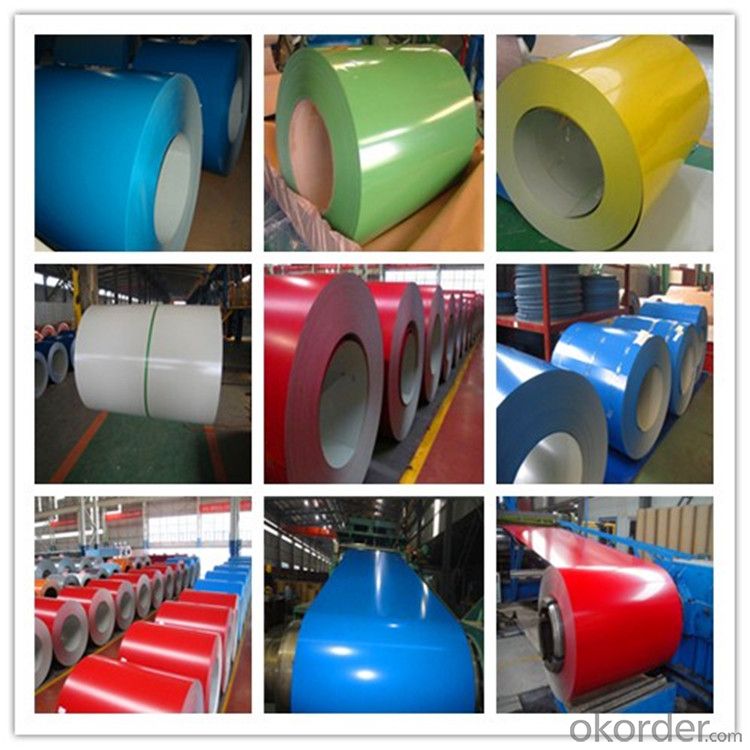
Product Advantages
1.With nearly 20 years experience in prepainted steel, accommodate different marketdemands. | ||||||||||||||
2.'Quality first, service first' is our business aim; 'The good faith get respect,cast quality market' is our Business philosophy . | ||||||||||||||
3.Having two series producttion line,with the abbual production capacity of 240000 tons. | ||||||||||||||
4.Exceed International ISO9001:2008&ISO14001:2004 quality and environmental standards | ||||||||||||||
5.Meet with ROHS standard |
Company Information
CNBM International Corporation is the most important trading platform of CNBM group.
Whith its advantages, CNBM International are mainly concentrate on Cement, Glass, Iron and Steel, Ceramics industries and devotes herself for supplying high qulity series of refractories as well as technical consultancies and logistics solutions.


F A Q
1, Your advantages?
professional products inquiry, products knowledge train (for agents), smooth goods delivery, excellent customer solution proposale
2, Test & Certificate?
SGS test is available, customer inspection before shipping is welcome, third party inspection is no problem
3, Factory or Trading Company?
CNBM is a trading company but we have so many protocol factories and CNBM works as a trading department of these factories. Also CNBM is the holding company of many factories.
4, Payment Terms?
30% TT as deposit and 70% before delivery.
Irrevocable L/C at sight.
5, Trading Terms?
EXW, FOB, CIF, FFR, CNF
6, After-sale Service?
CNBM provides the services and support you need for every step of our cooperation. We're the business partner you can trust.
For any problem, please kindly contact us at any your convenient time.
We'll reply you in our first priority within 24 hours.
- Q:What are the requirements for special steel used in automotive parts manufacturing?
- The requirements for special steel used in automotive parts manufacturing include high strength, durability, and resistance to impact and wear. It should also have excellent formability and weldability for easy shaping and joining processes. Additionally, the steel must meet specific standards for chemical composition, heat treatment, and surface finish to ensure optimal performance and safety in automotive applications.
- Q:What are the properties of silicon steel?
- Silicon steel, also known as electrical steel, possesses several notable properties. It has a high magnetic permeability, which enables it to efficiently conduct and generate electric currents. Additionally, silicon steel exhibits low core losses, making it ideal for use in electrical transformers and motors where energy efficiency is crucial. Furthermore, it has a high resistivity, allowing it to minimize eddy current losses. Overall, silicon steel's properties make it a valuable material in various electrical applications.
- Q:How does the microstructure of special steel affect its performance?
- The performance of special steel greatly depends on its microstructure. To enhance their properties and meet specific application requirements, special steels are alloyed with specific elements. The microstructure refers to how the steel's crystalline grains are arranged and whether any phase transformations are present within the material. One important aspect of the microstructure is the size of the grains. Through controlled cooling or adding alloys, fine-grained structures can be achieved, leading to improved strength, hardness, and toughness. Smaller grain sizes restrict the movement of dislocations within the material, resulting in increased strength and hardness. This is particularly crucial in applications where high strength-to-weight ratios are needed, such as aerospace or automotive components. The presence of different phases in the microstructure is another critical factor. By adding specific alloying elements, the formation of various phases like martensite, bainite, or ferrite can be promoted. These phases possess different mechanical properties, including hardness, toughness, and corrosion resistance. By carefully controlling the microstructure, it becomes possible to customize the steel's performance for specific applications. For instance, martensitic structures offer high hardness and wear resistance, making them ideal for cutting tools, while bainitic structures provide a good balance of strength and toughness, making them suitable for structural components. Moreover, the microstructure also determines how the steel responds to heat treatment processes like quenching and tempering. Heat treatments can modify the microstructure to achieve desired mechanical properties, such as increasing hardness or improving resistance to fatigue. The ability of the microstructure to transform during heat treatment enables precise control over the steel's performance characteristics. In conclusion, the microstructure of special steel has a significant impact on its performance. Grain size, phase distribution, and response to heat treatment are all crucial factors that influence the steel's mechanical properties and suitability for specific applications. By understanding and manipulating the microstructure, engineers can design special steels with enhanced performance, meeting the demanding requirements of various industries.
- Q:How does special steel perform in high-temperature creep conditions?
- Special steel is specifically designed and engineered to perform exceptionally well in high-temperature creep conditions. It exhibits remarkable resistance to deformation and maintains its mechanical properties even at elevated temperatures, making it highly reliable and suitable for applications that require stability and strength in such environments.
- Q:What are the different forms of special steel available in the market?
- In the market, one can find various types of special steel, each possessing its own distinct characteristics and uses. Here are some of the most commonly encountered forms: 1. Stainless Steel: A versatile variant of special steel, this type exhibits exceptional resistance to corrosion and staining. It finds widespread application in the manufacturing of cutlery, kitchen appliances, and medical equipment. 2. Tool Steel: Highly durable and resistant to wear and tear, this special steel is primarily employed in the production of cutting tools, molds, and dies. 3. High-speed Steel: Designed to withstand elevated temperatures and maintain hardness even at high speeds, this form is commonly utilized in the creation of drill bits, saw blades, and gear cutters. 4. Alloy Steel: To enhance strength and durability, alloying elements like chromium, nickel, or molybdenum are added to this special steel. It finds extensive use in the automotive industry, construction, and machinery manufacturing. 5. Carbon Steel: This cost-effective type of special steel is favored for its high strength-to-weight ratio. It is commonly employed in the construction of buildings, bridges, and pipelines. 6. Maraging Steel: Known for its exceptional strength and toughness, this low-carbon, high-nickel steel is frequently employed in aerospace and defense applications, including aircraft components and missile casings. 7. Spring Steel: Engineered to withstand high stress and retain its shape under heavy loads, this special steel is widely used in the production of springs, such as those found in automotive suspensions and mechanical devices. These examples merely scratch the surface of the diverse range of special steel available in the market. Each type possesses its own unique properties and applications, rendering them suitable for a multitude of industries and manufacturing processes.
- Q:What are the specific requirements for special steel used in the nuclear waste storage industry?
- The nuclear waste storage industry has stringent and critical requirements for special steel to guarantee the safety and long-term viability of storage facilities. These requirements are driven primarily by the need to mitigate risks associated with nuclear waste, such as radiation leakage and corrosion. One key requirement is the need for high strength and durability. Special steel used in nuclear waste storage must possess exceptional mechanical properties to withstand the weight and pressure exerted by waste containers and the surrounding environment. This includes resistance to deformation, fracture, and fatigue, as well as the ability to maintain structural integrity for an extended period. Another essential requirement is excellent corrosion resistance. Nuclear waste contains highly corrosive substances that can degrade regular steel over time. Therefore, special steel used in the nuclear waste storage industry must have enhanced corrosion resistance to ensure long-term durability and prevent leakage of radioactive materials. Furthermore, the steel must have a low susceptibility to stress corrosion cracking (SCC). SCC occurs when a combination of tensile stress, corrosive environment, and specific material conditions result in crack initiation and propagation. To maintain the integrity of containers and minimize the risk of leakage, the steel used must be highly resistant to SCC. Radiation resistance is also critical for special steel used in nuclear waste storage. The steel should exhibit minimal degradation or embrittlement when exposed to high levels of radiation. This is necessary to maintain the structural integrity of storage containers and prevent any weakening that could compromise waste containment. In addition, the special steel used in the nuclear waste storage industry must comply with strict regulatory standards and certifications. It must meet specific design codes and guidelines set by regulatory authorities to ensure compliance with safety regulations and minimize potential hazards. In conclusion, the special steel used in the nuclear waste storage industry must meet specific requirements, including high strength, durability, corrosion resistance, low susceptibility to stress corrosion cracking, radiation resistance, and compliance with regulatory standards. These requirements are essential for maintaining the safety and integrity of storage facilities and preventing any leakage or release of radioactive materials into the environment.
- Q:What are the main factors affecting the corrosion fatigue strength of special steel?
- The corrosion fatigue strength of special steel is influenced by several factors. Firstly, the composition of the steel plays a crucial role. Special steels typically contain various alloying elements such as chromium, nickel, molybdenum, and copper, which enhance their corrosion resistance. The presence and amount of these elements can significantly affect the corrosion fatigue strength of the steel. Higher levels of alloying elements generally improve the resistance to corrosion fatigue. Secondly, the surface condition of the steel is important. Any surface defects, such as scratches, pits, or roughness, can act as stress concentrators and accelerate the initiation and propagation of corrosion fatigue cracks. Additionally, the presence of surface contaminants, such as dirt, grease, or salts, can increase the corrosive environment and reduce the corrosion fatigue strength of the steel. Thirdly, the environmental conditions in which the steel is exposed play a significant role. Corrosion fatigue occurs due to the combined action of cyclic loading and a corrosive environment. Factors such as temperature, humidity, pH, and the presence of corrosive substances like saltwater or chemicals can accelerate the corrosion process and reduce the fatigue strength of the steel. Furthermore, the mechanical properties of the steel, such as its hardness, strength, and ductility, also influence its corrosion fatigue strength. Higher strength and hardness can enhance the resistance to fatigue crack initiation, while greater ductility can improve the resistance to crack propagation. However, excessive hardness or brittleness can decrease the corrosion fatigue strength. Lastly, the design and manufacturing processes of components made from special steel can impact their corrosion fatigue strength. Factors such as welding techniques, heat treatment, and surface finishing can introduce residual stresses or alter the microstructure of the steel, affecting its corrosion fatigue behavior. Overall, the corrosion fatigue strength of special steel is influenced by its composition, surface condition, environmental conditions, mechanical properties, and manufacturing processes. Understanding and appropriately addressing these factors are crucial for enhancing the corrosion fatigue resistance of special steel components.
- Q:How is case-hardening steel used in the production of gears and shafts?
- Case-hardening steel is used in the production of gears and shafts to enhance their surface hardness and wear resistance while maintaining a tough and ductile core. This process involves heating the steel in a carbon-rich environment, which diffuses carbon into the surface layer of the material. Once cooled, the steel develops a hardened outer layer, known as the case, while the core remains relatively soft. This ensures that gears and shafts can withstand the high stress and friction encountered during operation, increasing their durability and longevity.
- Q:How does special steel contribute to the oil and gas industry?
- Special steel plays a crucial role in the oil and gas industry by offering enhanced strength, durability, and corrosion resistance needed for various applications. It is used in the construction of pipelines, drilling equipment, storage tanks, and offshore platforms, ensuring reliable and safe operations in harsh environments. Additionally, special steel's high heat resistance enables it to withstand extreme temperatures in refining processes, while its resistance to cracking and wear ensures the longevity of critical components. Overall, special steel contributes significantly to the oil and gas industry by providing the necessary materials for efficient and secure exploration, production, and transportation of oil and gas resources.
- Q:How does special steel perform in cryogenic gas environments?
- Special steel performs well in cryogenic gas environments due to its unique properties. It has excellent resistance to low temperatures and maintains its strength and toughness even at extremely cold temperatures. This makes it highly suitable for applications in cryogenic gas environments where traditional steel may become brittle or lose its strength. Additionally, special steel's resistance to corrosion and thermal expansion further enhances its performance in these extreme conditions.
1. Manufacturer Overview |
|
|---|---|
| Location | |
| Year Established | |
| Annual Output Value | |
| Main Markets | |
| Company Certifications | |
2. Manufacturer Certificates |
|
|---|---|
| a) Certification Name | |
| Range | |
| Reference | |
| Validity Period | |
3. Manufacturer Capability |
|
|---|---|
| a)Trade Capacity | |
| Nearest Port | |
| Export Percentage | |
| No.of Employees in Trade Department | |
| Language Spoken: | |
| b)Factory Information | |
| Factory Size: | |
| No. of Production Lines | |
| Contract Manufacturing | |
| Product Price Range | |
Send your message to us
PPGI Prepainted Galvanized Steel Coil for PU Panel
- Loading Port:
- Tianjin
- Payment Terms:
- TT OR LC
- Min Order Qty:
- 100 m.t.
- Supply Capability:
- 500000 m.t./month
OKorder Service Pledge
OKorder Financial Service
Similar products
New products
Hot products
Related keywords
